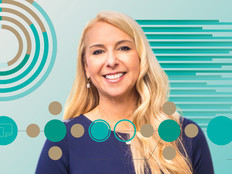Remote Learning Research and Student Data Provide Support
Beard is the response to intervention (RTI) facilitator for HCSD’s largest elementary school. She explains that the RTI program’s main mission is to ensure that students with specific problems or skills deficits receive the directed instruction they need to succeed. “It’s about working to find out what the child is missing and then trying to fill those gaps with the appropriate interventions,” she says.
The program depends on everything from teacher observations to an array of software-based assessment tools that collect and analyze data on student progress, Beard says. The district’s primary “universal screener,” for example, is an adaptive test called the i-Ready assessment. The test works by adjusting its difficulty based on which questions a student answers correctly. Results from the test help determine which students may qualify for different levels of instruction in basic math and reading.
Other intervention technologies in the district’s arsenal include MasteryConnect, which teachers use to create custom assessments tailored to the standards their students are required to meet; easyCBM, which they use to track individual progress among students who are receiving extra help; and the standardized CASE Benchmark Assessments, deployed to gauge overall academic development during three testing sessions staggered throughout the year.
DISCOVER: These 5 tips will help district leaders effectively curate student data.
Like districts nationwide, HCSD shut down in-person learning soon after COVID-19 hit in 2020. The district reopened in the fall but allowed students and their families to determine whether they would come to school for in-person classes or participate remotely. Most who opted for virtual learning performed just fine, Beard says, but other students soon fell behind, and in some cases the deficits they already had grew worse the longer they remained at home.
“I think our district did well compared with most,” Beard says, “but we still had students who just didn’t show up, or when we looked at the assessments and the data, they didn’t learn anything.”
Last year, using federal CARES Act funding — and relying on data gleaned through RTI — HCSD launched a learning initiative called Summer REACH to help students who were most affected by the pandemic. The program returned this June, only now with more than twice the number of participants and what Beard describes as a much greater sense of urgency.
“When you think about it, it’s scary,” she says. “For a lot of these kids, we have weeks to catch them up after an entire year when they’d basically been away from school.”
MORE ON EDTECH: Students lost the opportunity to learn without digital equity.
Fill in the Gaps with Targeted Lessons and Material
With that in mind, Beard says, the instructors who lead the Summer REACH program lean on technology wherever they can to amplify and fortify what they teach in their classrooms. This helps to speed up the learning process as much as possible.
A similar approach to closing the learning gap may soon get underway in New York City, where the plan is to develop individualized intervention programs that may include methods such as “high-dosage” tutoring combined with digital instructional tools for students to use on school-issued devices.











